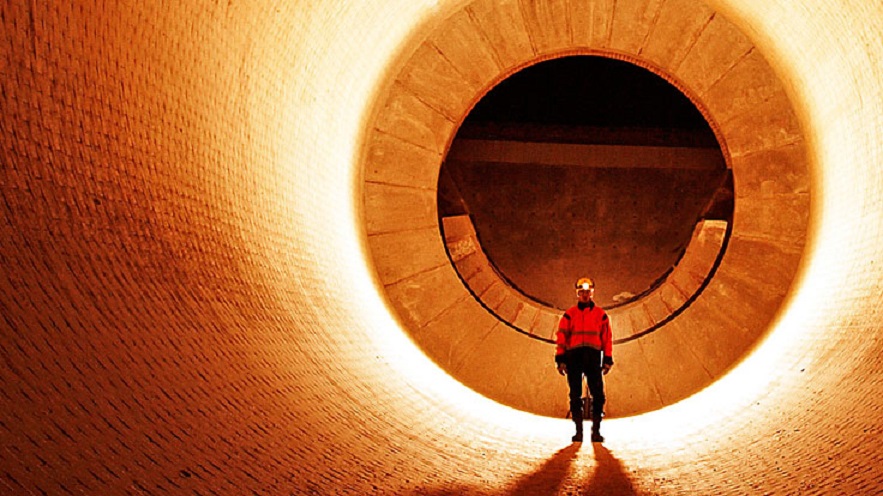Silica powder is a kind of powder that will produce a part of solid waste tail gas in the process of smelting ferrosilicon alloy and metal silicon, which is collected by dust removal equipment.
The raw materials for smelting ferrosilicon alloy are quartz rock crushed stone and pig iron, adding coke as a reducing agent, reacting in a high-temperature electric furnace close to 2000 ℃, the quartz is reduced to silicon, and reacts with pig iron to form ferrosilicon alloy. During this process, due to the high temperature, the flue gas brings 10% to 15% silicon (Si) vapor, which combines with oxygen in the flue to form silicon monoxide, and reacts with oxygen in the cold air to form silicon monoxide after exiting the flue. The silica vapor then condenses and crystallizes in air to form fine particles.
Properties of microsilica powder
(1) Good insulation. Silica powder has the advantages of high purity, stable performance and good electrical insulation, so that the cured product after solidification also has the characteristics of good insulation and high arc resistance.
(2) Add silicon micropowder to the epoxy resin to reduce its exothermic peak temperature during curing, which can also reduce the linear expansion coefficient and shrinkage rate of the cured product, reduce the internal stress of the cured product, and avoid cracking.
(3) Microsilica powder is an inert substance, it is difficult to react with other substances, and it does not react much with acid and alkali. If a layer of microsilica powder particles is covered on the surface of the object, it can effectively improve the corrosion resistance.
(4) The particle gradation is reasonable, which can reduce and eliminate precipitation and stratification during use; it can increase the tensile and compressive strength of the cured product, improve the wear resistance, increase the thermal conductivity of the cured product, and increase the resistance flammability.
(5) Silica powder treated with silane coupling agent has good wettability to various resins, good adsorption performance, easy mixing, and no agglomeration.
(6) Adding silicon micropowder filler to the organic resin can improve the properties of the cured product and reduce the cost.
Modification of silica powder
The surface modification of silica powder mainly relies on silane coupling agent to achieve compatibility with polymer materials. In the modification process, special attention should be paid to the types of silanes, their dosage and usage. In addition, the best treatment time, temperature and pH value can be mastered through experiments. By measuring the wetting angle, penetration time and wetting point of modified powdered quartz to water droplets, compared with unmodified powdered quartz, it shows that modified powdered quartz has better compatibility and affinity with organic polymers. The viscosity of the silane-modified powder quartz in the epoxy resin mixing system is significantly reduced, the processing performance of the filler and polymer mixing system is improved, a uniform mixture is obtained, the filling amount is increased, and the production cost is reduced.

Application of silica powder in refractory industry
Application of silica powder in refractory industry
Microsilica powder is mainly used in unshaped refractories in the refractory industry. The action mechanism of microsilica powder is complex, and it is generally considered to be the combined action of filling and coagulation. Although the refractory aggregate and powder gradation of traditional refractory castables have higher bulk density and denser, many pores are still filled by excess water. After the water is removed, many pores are left; when microsilica powder is used, these pores are filled by microsilica powder, and a very small amount of micropores are filled by water. In this way, the amount of mixing water for refractory castables is reduced, and after the water in the molded body is removed, there are fewer pores left. That is to say, the addition of microsilica powder can reduce the water consumption for mixing, increase the bulk density and reduce the apparent porosity at the same time.
There are two main types of SiO2 powder used in castables: one is made of high-purity silica, and the other is a by-product of the production of metallic silicon or ferrosilicon, both of which are amorphous amorphous materials. The former is granular and inactive; the latter is hollow spherical, active, non-agglomerated, and has good filling properties. After being mixed with castables and condensed, silanol groups are formed on the surface of SiO2, and after drying and dehydration, a siloxane network structure is formed, which is not easy to break when the temperature rises, and the medium temperature strength is improved, and mullite is formed with Al2O3 at high temperature, which is also Conducive to the improvement of material strength. Therefore, silica powder is widely used in low cement, ultra-low cement and cement-free castables.
SiO2 is used together with an appropriate dispersant and added to the castable. Since silicon micropowder is a particle with an obvious spherical shape, it is easy to enter the tiny gaps in the castable, and the particle size is small, so it not only has a good water reducing effect, but also improves The compactness of the refractory castable reduces the porosity and porosity left after drying, thereby improving the strength and high-temperature performance. At the same time, the active silica powder forms a colloid in water, and the colloid particles absorb the dispersant around it to form a solvent layer, thereby increasing the fluidity of the castable and improving its molding performance. In addition, due to the small particle size, large surface free energy, many lattice defects, and high activity of silicon micropowder, solid-state sintering reaction and mullite reaction with Al2O3 in high-alumina refractories are more likely to occur at medium and high temperatures. Thereby improving the post-firing strength and high temperature performance of the low cement refractory castable.
